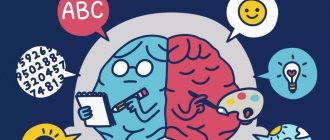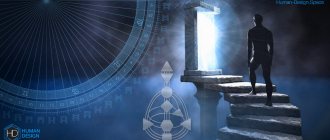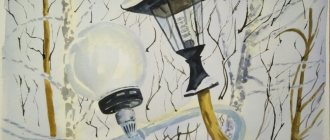Creative thinking is not a talent, but a skill.
This is true. After all, it can be learned. TRIZ, Lateral Thinking, Design Thinking, CRAFT.
Lateral gap
When coming up with an idea, we want to follow the beaten path. Our brain puts all incoming information into patterns - this greatly simplifies our life, but prevents us from inventing new solutions. The essence of the lateral technique (the author of the term is the British psychologist Edward de Bono, who developed many algorithms for generating new ideas) is to overcome stereotyped thinking. The technique is based on a three-stage algorithm.
Point A - we focus on the task, that is, we select one aspect of it. The narrower the focus, the easier it is to create something new. Do not overload him with information: this inhibits creative thinking.
Let's say we need to come up with a restaurant concept. Focus options:
- people order food in a restaurant;
- people go to restaurants to avoid eating at home;
- in a restaurant people choose food from the menu.
Point B - we generate a lateral gap, a set of absurd provocative ideas for the task. There are 6 basic methods, they are easier to explain with an example.
- Addition: focus - people order food; gap - people order food and dishes.
- Inversion: focus - people go to a restaurant so as not to eat at home; gap - people go to restaurants to eat at home.
- Exception: focus - in a restaurant people choose from the menu; gap - the restaurant does not have a menu.
- Hyperbolization: focus - people in a restaurant are sitting on chairs and sofas; gap - people in a restaurant are sitting on the same chair.
- Replacement: trick - people order food from the waiter; gap - people order food from friends.
- Rearrangement: focus - people pay for food to sit in a restaurant; gap - people sit in a restaurant so as not to pay for food.
This is the stage of breaking the template: the resulting ideas cannot be applied in reality. To “ground” an absurd solution, at point C we establish connections with reality. There are several ways here too:
- we extract its basic principle from an absurd idea and then work only with it;
- We are looking for the positive aspects of the idea, that is, its immediate benefits and advantages: what value of the idea is visible at first glance?
- we focus on the difference: we compare the provocative idea with the usual way of doing things and find the main differences. Based on these differences from the usual template, we can build a new concept.
TRIZ - theory of solving inventive problems
Although the founder of the theory, the Soviet scientist Genrikh Altshuller, developed it to solve technical problems, it is perfect for any creative person.
TRIZ asserts that the development of any system constantly runs into dead ends - contradictions that at first glance seem irremovable. Let's say we want to develop a system that allows people to send long text messages in situations where they literally have their hands full. Contradiction? TRIZ has several techniques for this case.
For example, the screening technique suggests using time variability. You can respond to urgent requests with ready-made text templates, and provide details later.
But the ideal final solution (IFR) is when there is no system at all, and its function is fulfilled. For example:
- there is no education system, but people are educated - p2p education;
- there are no taxis, but passengers are delivered - sharing services;
- There are no programmers, but the game is written - ready-made game engines.
For this purpose, there is a technique of collapsing - combining the functions of several systems into one. In our example, this is a voice recognition system that makes the message seem to print (and send) itself.
Synthesis of forms using the CRAFT methodology
The field of application of the CRAFT (Creative Algorithm Framework & Tools) method is social forms of relationships. They refer to any models of interaction between people. Typically, such interactions are built stereotypically: when going to the theater, entering a business incubator, or going to a music festival, we imagine in advance what awaits us there and how we will interact with others.
The point of CRAFT is to reinvent these interactions, deconstruct them into elements, and then place those elements into a new context.
For example, you want to come up with a restaurant concept where customers will come in evening wear. Evening wear is a form of relationship. Let's break it down into elements: in what cases do people dress this way? Theatre, gala concert, Oscar ceremony. Putting these elements into the context of a restaurant: how can you make going to a restaurant feel like going to a theater or attending a ceremony? Cultural program, themed events, etc. Now the restaurant is no longer just a “catering establishment”, but something more.
A little more about the methods of creative thinking in pictures.
You can come up with ideas randomly or sequentially.
Creativity is a muscle that can be strengthened. As a competency, it consists of four measurable attributes: originality, speed, flexibility and detail. These skills are developed in the same way as our muscles - on the simulator. That is, the more we invent, the better the creativity skill.
Coming up chaotically is an unconscious process. Coming up consistently is a structured and deliberate process.
We will learn to invent consciously and consistently. To do this, we will analyze four methods.
Lateral thinking
This is a set of creative techniques proposed by Edward de Bono for the development of unconventional thinking. Allows you to invent anything you want!
How it works?
You need to take 3 steps.
- Step 1 . We focus on the task. We need to find a direction or idea from which we will build. Without a starting point it is impossible to move on.
- Step 2 . We come up with absurd ideas using lateral shifts.
Let's look at three methods:
1. Method of provocation.
Violation of logic by introducing absurd new data.
The provocation method is based on the idea that new concepts and correct solutions arise after a mistake has been made.
A provocation is a mistake that we deliberately create so that it opens up a new line of thought for us.
At the moment of putting forward absurd ideas, you yourself do not have the slightest idea where they can lead, but this method helps to knock you out of your usual channel and start thinking differently.
2. Reverse method.
It lies in the fact that first we consider a “normal” statement, state, method of action, and then we move on to the exact opposite.
3. Exaggeration method.
We consider a “normal” action or state (quantity, size, weight), and then we deliberately exaggerate the meaning of the norm, exaggerate it.
- Step 3. Choose one idea that can become real.
Creativity Test
This test was created as an interpretation of the methodology for diagnosing personal creativity, developed by Elena Evgenievna Tunik, candidate of psychological sciences, and allows you to determine four characteristics of a creative personality: curiosity, imagination, complexity and risk-taking.
To correctly interpret the answers, you should adhere to several rules when taking the test:
- Among the short offers offered, you will find some that definitely suit you better than others. For them you should select the answer “Yes”. Some proposals are only partially suitable for you; you should answer “Maybe”. Other statements will not suit you at all; the answer for them is “No”. For those statements about which you cannot come to a decision, the last option is provided - “I don’t know.”
- There are no right or wrong answers here. Mark the first thing that comes to your mind when reading the sentence. This task has no time limit, but work as quickly as possible. Remember that when giving answers to each sentence, you must note what you really feel. Choose only one answer for each question.
- Since the test is based on personal perception, you should not expect it to be an objective test of your abilities. To a greater extent, it reflects your idea of your creative abilities. Remember that creativity is not an innate characteristic, but a quality that can be developed.
- The test data will be recorded after you answer the last question and see confirmation of the end of the test. If you finish the test before the last question and close the page, the data will not be saved.
Statistics Full screen
On the other hand, creative thinking is associated not so much with logical schemes, but with developed associative thinking and human imagination. All this can be developed with the help of special exercises, which represent another important component of the course.
Identifying contradictions
“The Theory of Solving Inventive Problems” is the methodology of the Soviet engineer Genrikh Altshuller. An inventive task is a complex task that can be solved by identifying a contradiction and eliminating it.
How it works?
- Situation
Visitors to the first skyscrapers encountered one unpleasant, but seemingly completely inevitable physical effect. In skyscrapers, elevator ventilation shafts and stairwells acted like giant exhaust pipes, creating powerful air currents. The powerful draft prevented the doors and windows from being opened. To prevent vortices, doors must always be closed. The doors must be open for people to enter.
It seemed like a natural idea to make a gateway, but someone had to manage it; the problem could not be solved cheaply. The ideal would be to ensure that some doors close themselves when others open.
- Let's formulate the problem.
Come up with a system for opening and closing doors.
- Let's identify the contradiction.
The door is always closed relative to the building and open relative to the person
- Let's look at typical techniques.
The principle of universality (the door can be both closed and open at the same time).
- We get the result.
Analyze and improve: revolving door.
Where can you use creative techniques?
In general, creative techniques can be used to solve any creative problems. Let's define that a creative task is any non-routine action of a marketer or copywriter that requires some intellectual effort, and sometimes even significant effort, to obtain a non-trivial, unique, interesting result.
If we take specific tasks that are most often encountered in the activities of a marketer or copywriter, then among them the following can be classified as creative:
- developing ideas for advertisements;
- search for topics for creating content (posts, articles, videos, columns, etc.);
- developing a concept for promoting a product or brand on social networks;
- searching for new ways to promote the product;
- writing a title for an article;
- collection of topics for email newsletters;
- news feeds for promotion with posts and memes;
- developing a name or slogan for a new product/service/promotion, etc.
Here and in a host of related areas, creative work is extremely important. You can be a master of statistics, tools, and other “mechanics,” but if you don’t have a creative streak, you can’t consider yourself a truly creative entity.
CRAFT
CRAFT is a methodology by Vasily Lebedev, which helps to rethink traditional social forms and create new ones.
How it works?
- Task
: come up with a concept for the park.
When we come up with an idea, we often immediately focus on the object of the idea: for example, we are faced with the task of developing a park.
Agree, you are immediately tempted to think about what benches to put, what asphalt to lay and what balloons to hang. This means that we will initially create the same park with a set of ordinary items.
In order to find a feature, or more precisely, to arouse interest in the park, let's look at a person's attitude towards it. How does he perceive the park? What should it be like? How will this perception change? And does it need to be changed at all?
- Return to abstract thinking
To answer this question, we need to take a step back into abstract thinking and begin to think about human motivations and barriers to the park. This will allow us to identify the so-called conflict, on the basis of which we will formulate our idea.
While searching for a motive, it turned out that the park is often used as a first date location. After all, the park has all the possibilities for this: its own Facebook page, its own website, its own employees and the same “benches, ponds, trees.”
All that remains is to “tailor” them to a specific drama, so that it becomes clear why exactly this park is needed. This is how the big idea of a “first date service” and the first park appeared, which helps organize dates with all its resources, from Facebook to the ice cream man.
- Reveal the idea in every element
The next step is to reveal the big idea in each individual element of communication: benches on which you can sit only tightly huddled together, paths where you need to hold each other’s hands in order to walk along them, a serenading ice cream man, and more.
Creativity in the modern world
Modern society is involved in the processes of market globalization and increased competition. You need to quickly respond to changes, apply non-standard solutions, and generate new original ideas. Society needs unusual solutions to familiar problems, new approaches to solving known and seemingly studied problems, as well as new ways of behaving in typical situations. Most professions in the modern world require creativity and the activation of creativity. Creative thinking manifests itself in the modern socio-economic system in various forms. These include scientific discoveries, entrepreneurship, technical inventions, the creation of works of art, relationships with people, and public administration.
Design Thinking
This is the practice of quick and useful actions to create products and services that people really need. A method of creating a product with a focus on human needs, thanks to empathy - the ability to look at the world through the eyes of other people, and also understand their needs.
How does it work?
The design thinking algorithm consists of five stages:
- Empathy
At this stage, your task is to understand what people do, why they do it, how they see the world around them, what values they have, and also learn about their physical and emotional needs.
- Focusing
You need to clearly define the task facing you and draw conclusions based on the information and findings that you discovered during the empathy stage.
- Generation of ideas
During a brainstorm, quantity is important, not quality. You can use any generation methods, and it is also important to record each idea on a separate sticker so as not to miss an interesting find in the process of coming up with it.
- Prototyping
We start creating quick and rough prototypes. We develop interaction scenarios and use role modeling. We create conditions for obtaining the first user experience.
- Testing
We let a focus group test the prototype and collect feedback.
Constantly ask what the user doesn’t like. Focus on what you don't know yet.
Try to test the product where it will be used or simulate the environment as closely as possible. For example, the Steelcase+IDEO team thought about how to make learning more convenient and mobile, and developed a chair-desk.
Creativity and Creativity
Creative thinking is often also called creative, but creativity and creativity are not the same thing. For a better understanding of the processes, it makes sense to clarify the wording: creativity is always the creation of something new through insight: the receipt of some product of mental activity, in which the emotional and personal qualities of the creator are manifested. Many researchers call creative action uncontrollable, an unconscious act, or unstimulated brain activity, which manifests itself in the desire to get out of the “comfort zone” (Bogoyavlensky D. B.). The act of creativity is characterized by suddenness, spontaneity, which... Knitted with external circumstances and personal experiences.
Creativity is the ability to create, which is characterized by a readiness to generate unusual ideas and solve problems, while going beyond generally accepted patterns. Creativity is one of the independent factors of giftedness. Creative thinking relies on inventive art and discoveries in various fields of knowledge. It breaks stereotypes, boldly combines the incongruous, relies on algorithms and on this basis creates something completely new or solves seemingly unsolvable problems. Without creativity, creativity is impossible. Creativity can be called a technology for organizing the creative process. A creative person can get ahead of the creative process, giving it direction, but does not always accompany it.
Thus, creativity is one of the features of creative thinking. Creativity is always primary, but creativity allows you to achieve a specific goal. A major component of the creative thinking process is some pragmatism. This means understanding at the initial stage a specific goal (why you need to create it), purpose (for whom it is needed), a solution path (how to do it), and, in fact, the subject (what is needed for this).
If creativity plays a decisive role in the process of generating creative ideas, then their perception and implementation depend on cognitive abilities. Thanks to the plasticity of the brain, we can develop our cognitive abilities, train thinking, memory, attention and perception. Regular exercises on online brain simulators can be of great help with this.
We sincerely wish you creative discoveries and good luck and, of course, success in self-development.










